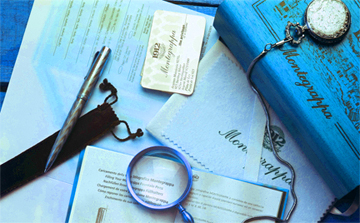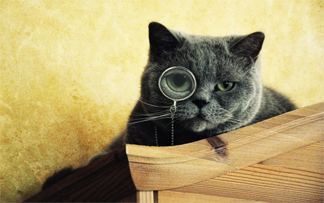 Many authors and writers assert that what they experience in real life inevitably transposes to truth in their stories. Let’s imagine that an author introduces you his story and directs you to review it. You point out a certain sentence and claim, “Not true to life.” The author is agitated by your opinion and repeatedly states, “But it truly happened.” If it happened in real life, then—realistically—it must be true.
Many authors and writers assert that what they experience in real life inevitably transposes to truth in their stories. Let’s imagine that an author introduces you his story and directs you to review it. You point out a certain sentence and claim, “Not true to life.” The author is agitated by your opinion and repeatedly states, “But it truly happened.” If it happened in real life, then—realistically—it must be true.
However, it is accurate only.
Truth is a great power of accuracy. Remember this: the “true thing” always encompasses the accurate. Many aspiring authors will illustrate a thing or event as they witnessed it, and they truly believe they are expressing their depiction truthfully.
For instance, let us imagine that you have never seen a cow, never heard of a cow, don’t know a cow from a duck. I head out into the field and choose a brown cow from the heard, and escort it back to you. As you gaze at the cow, I describe it specifically—faithfully, leaving out nothing, misstating nothing, fabricating nothing. I am acutely accurate. But you leave with the false belief that all cows are brown! I have been accurate, but I have been untrue.
Authors believe they write truthfully but they don’t evaluate the seriousness of accuracy.
Let’s say you track every event in your life as it has materialized—and because these events are
Let’s say you track every event in your life as it has materialized—and because these events are
Let’s say you track every event in your life as it has materialized—and because these events are
Let’s say you track every event in your life as it has materialized—and because these events are colorful, enchanting, and comparable to best-selling novels, you clench them immediately, and develop the premise of a story. Then, because your story flounders to captivate readers, because it fizzles to excite, you criticize the public, not yourself. You have palpated the aura of life for your story, and so you think your story is genuine, fresh and true.
A novelist’s story is not always inventive, innovative, and true, even if he taps into life for his inspiration and experience. Weird as it may seem, you can point out that life is not always “true to life“—from the viewpoint of the creator.
 I once created a story in which my main character had the miserable task to inform a certain gentleman about the violent death of his only sister, whom he had just left two hours before. This is how I detailed the man’s reaction: “He threw up both hands and teetered back, exactly as they do in soap operas, roaring all in a wheeze: ‘Oh, my God! This is dreadful! What will my wife say?‘” You may picture how I had described the man’s reaction, but this man was untrue to life. From my viewpoint in recounting the story, the man was staged, misleading, untrue. Even though the occurrence was a true fact and the emotion was real, it had no merit as “material,” and no skilled fiction writer would have considered using it in his story.
I once created a story in which my main character had the miserable task to inform a certain gentleman about the violent death of his only sister, whom he had just left two hours before. This is how I detailed the man’s reaction: “He threw up both hands and teetered back, exactly as they do in soap operas, roaring all in a wheeze: ‘Oh, my God! This is dreadful! What will my wife say?‘” You may picture how I had described the man’s reaction, but this man was untrue to life. From my viewpoint in recounting the story, the man was staged, misleading, untrue. Even though the occurrence was a true fact and the emotion was real, it had no merit as “material,” and no skilled fiction writer would have considered using it in his story.
“What is the criterion?” you might ask. How should you, the writer, guide yourself in handling a climactic, critical scene? Or how should the reader critic your incident as true or not?
The word “seem,” and not the word “true,” is the most essential. No ambitious novelist, no good author, no skilled writer can construe and reword life as it actually is. Nobody can, for nobody knows.
Who is to say what life actually is?
It seems easy—easy for us who have it and live in it and see it and hear it and feel it every second of the day. I say that life is truly this or that, and you proclaim it is something else, and a third writer says “It is this,” and a fourth writer says “It is that.” Not even science will guide us. No two photographs will project the same perception of the same reality; and here we are bickering not with science, but with art, that promptly incorporates the individuality of the artist and how he views life.
Even the same writer will not observe the same thing twice precisely similarly. His personality embodies one thing right now and another thing the next day. How do we determine what life truly is then?
 Here is a description that I selected from a melodrama novel: “… where the sunlight catches the brown coat of the horse, you will see, if you look close, a blunt spatter of purple—pale purple.” This is inaccurate. The horse is not purple, nor does it have any purple blemishes. Stand at the right distance and the purple blemish pans out into the shiny reflection of the sun, and the effect is true.
Here is a description that I selected from a melodrama novel: “… where the sunlight catches the brown coat of the horse, you will see, if you look close, a blunt spatter of purple—pale purple.” This is inaccurate. The horse is not purple, nor does it have any purple blemishes. Stand at the right distance and the purple blemish pans out into the shiny reflection of the sun, and the effect is true.
The argument is this: In the fine arts—such as creative writing—we do not cherish much about what life actually is; rather we care more how life resembles to an engaging, impressionable person. If the writer reveals his story or paints his picture so that the bulk of readers will say, “Yes, it must have happened that way under those conditions and circumstances,” he is true. His correctness cuts no figure whatsoever. He can reveal his story accurately if he chooses to. If he chooses to insert inaccuracies to emphasize or exaggerate a point that imparts a truthful perception, he has “creative license” to do so. We have no part in that.
Paint the horse purple if it fits your purpose; fill the mouth of your main character with cotton—these things do not matter. It is “truth” that matters.